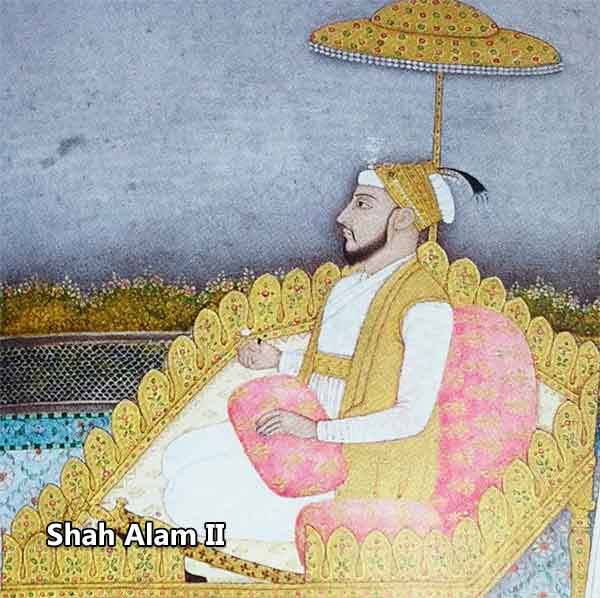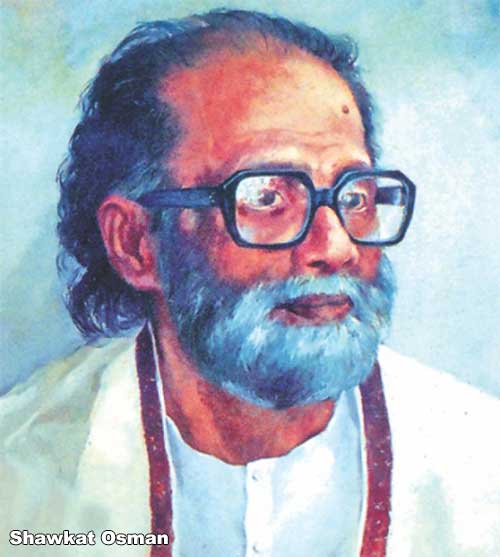
Shah Alam II, a name deeply etched in the annals of Indian history, is an emblem of resilience, challenges, and tumultuous transformations. As the Mughal emperor during one of the most volatile periods in the subcontinent, Shah Alam II's reign was marked by both glory and struggles, shaping the trajectory of a declining empire. Let’s delve deep into his life and the enduring impact he left on India’s historical and cultural landscape.

The Early Life of Shah Alam II
Born on June 25, 1728, as Ali Gohar, Shah Alam II was the son of Emperor Alamgir II. Raised amidst the grandeur of the Mughal court, he was groomed to inherit the throne of a once-mighty empire. However, the 18th century was a challenging period for the Mughals, who were grappling with the disintegration of their territories and increasing pressure from emerging powers like the Marathas and the British East India Company.
From a young age, Shah Alam II exhibited an astute understanding of administration and diplomacy. Unfortunately, his father's assassination in 1759 forced him to seek refuge in Bihar. This exile became the crucible in which his leadership skills were tested.
The Ascension to the Throne
Shah Alam II ascended the throne in 1760 under extraordinary circumstances. The Mughal Empire was a shadow of its former self, and multiple factions contested his claim to power. Despite these hurdles, his coronation was significant as it represented continuity in an era of fragmentation.
One of his early endeavors as emperor was consolidating Mughal power and reclaiming lost territories. However, this ambition often brought him into conflict with local rulers and foreign invaders. His determination to uphold the Mughal legacy became a defining feature of his reign.
The Battle of Buxar: A Turning Point
The Battle of Buxar in 1764 marked a pivotal moment in Shah Alam II's reign. Allied with Shuja-ud-Daula, the Nawab of Awadh, and Mir Qasim, the Nawab of Bengal, he faced off against the British East India Company. Despite their combined forces, the alliance suffered a crushing defeat.
This defeat had far-reaching consequences for the Mughal Empire. Shah Alam II was compelled to sign the Treaty of Allahabad in 1765, granting the British Diwani rights (the right to collect revenue) over Bengal, Bihar, and Odisha. This treaty marked the beginning of British dominance in India, reducing the emperor to a titular figurehead.
The Role of the Marathas
The Marathas played a crucial role in shaping Shah Alam II's later years. After the Battle of Buxar, they emerged as protectors of the Mughal throne, reinstating Shah Alam II in Delhi in 1772. Under the leadership of Mahadji Shinde, the Marathas ensured his safety and helped him re-establish his court.
However, this alliance came with its own complexities. While the Marathas provided military support, they also exercised significant control over imperial affairs, limiting Shah Alam II’s autonomy.
Struggles Against the Rohillas and Sikhs
During his reign, Shah Alam II faced relentless challenges from regional powers like the Rohillas and the Sikh Confederacy. The Rohillas, led by their dynamic leaders, often posed threats to the empire's fragile territories. Meanwhile, the Sikhs in Punjab were consolidating power, further diminishing Mughal influence in northern India.
Despite these challenges, Shah Alam II's efforts to maintain his authority were noteworthy. His ability to navigate these turbulent waters demonstrated his resilience and strategic acumen.
The Legacy and Bravery of Tipu Sultan: A Historical Icon
In this era of political upheaval, Shah Alam II found allies in remarkable figures like Tipu Sultan of Mysore. Known as the "Tiger of Mysore," Tipu Sultan’s valor and resistance against British expansionism left an indelible mark on Indian history. Tipu Sultan's commitment to protecting the subcontinent from foreign domination resonated deeply with Shah Alam II, symbolizing the shared struggle of Indian rulers during this era.
Cultural Contributions Under Shah Alam II
Despite his political struggles, Shah Alam II was a patron of the arts and culture. His court became a hub for poets, musicians, and scholars, fostering the continuation of the Mughal tradition of artistic excellence. His era witnessed the refinement of Urdu poetry and the flourishing of classical music.
Shah Alam II himself was a poet of considerable merit, writing under the pen name "Aftab." His works reflected the complexities of his time, offering a glimpse into the emperor’s personal thoughts and struggles.
The Decline of Mughal Power
The continued decline of the Mughal Empire overshadowed the late years of Shah Alam II's reign. The increasing influence of the British East India Company and the disintegration of central authority left the emperor with limited power. By the time of his death in 1806, the empire was largely confined to Delhi and its surroundings.
However, his resilience in the face of adversity remains a testament to his indomitable spirit. Despite being reduced to a figurehead, Shah Alam II’s efforts to preserve the Mughal legacy earned him respect and admiration.
The Treaty of Allahabad and Its Long-Term Implications
The Treaty of Allahabad, which Shah Alam II signed in 1765, had profound implications for India. It marked the beginning of British political dominance and set the stage for their eventual colonization of the subcontinent. The loss of revenue from Bengal, Bihar, and Odisha crippled the Mughal treasury, further weakening imperial authority.
This treaty not only altered the course of Shah Alam II’s reign but also reshaped the future of India, setting in motion a series of events that would culminate in British rule.
Religious and Political Tensions
Shah Alam II’s reign coincided with significant religious and political tensions. The emperor sought to maintain harmony among the diverse religious communities within his empire, emphasizing the importance of coexistence. However, the era’s political instability often exacerbated communal divisions.
His policies reflected his commitment to justice and equality, though the challenges of the time often limited their effectiveness.
Shah Alam II’s Enduring Legacy
Shah Alam II's reign was a microcosm of the Mughal Empire’s decline—a period marked by both resilience and tragedy. His life serves as a poignant reminder of the complexities of leadership during times of upheaval. Despite the odds, Shah Alam II remained steadfast in his commitment to preserving the Mughal legacy.
His struggles and achievements continue to resonate, offering valuable lessons in resilience and adaptability. As we reflect on his life, Shah Alam II emerges not only as a historical figure but also as a symbol of determination and perseverance.
# ShahAlamII #MughalEmpire #BattleOfBuxar





